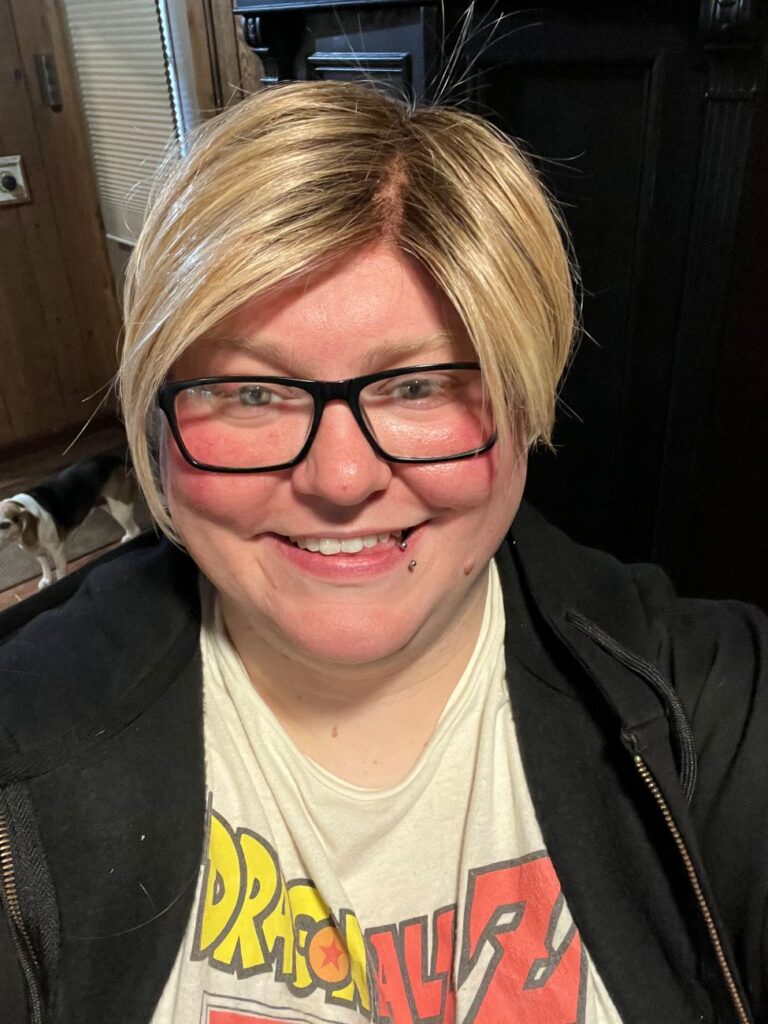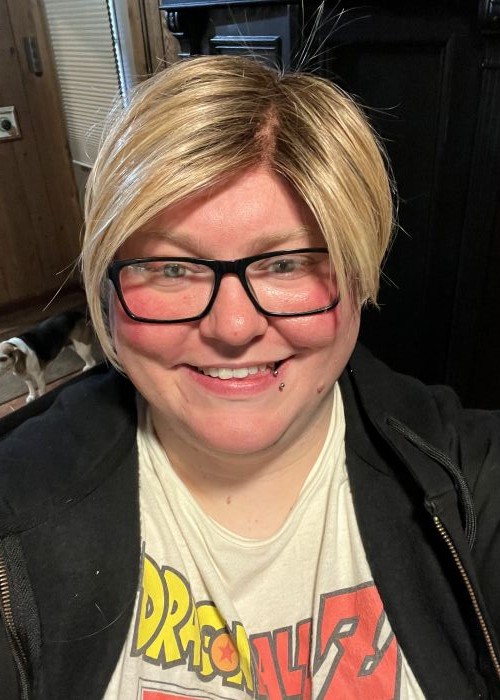Brittany Thrasher didn’t start her detransition with an announcement. She began her third attempt at leaving the transgender movement with a razor, standing in front of her mirror and shaving off the full beard that testosterone medication gave her––not just to embrace her true self, but to declare war on the lie she had fallen for.
“I realized that I was a female and that I was just pretending to be a man,” she told IW Features.
The only thing left to cut was that performance.
It didn’t always feel like a performance for Thrasher, however. In 2015, when she was 20 years old, alone in Springfield, Missouri, Thrasher said her gender confusion began when she found a transgender-identified influencer online.
“I had never heard of the word ‘transgender.’ I started looking at the stuff on his page and reading why he was doing this,” she said, recalling that she began crying. “I was like, ‘Man, this must be what’s wrong with me.’”
The promise of relief, an almost intoxicating idea that there was a name and a cure for the discomfort she had carried into adulthood, was what convinced Thrasher she was living in the wrong body. That discomfort, Thrasher said, was rooted in being a masculine girl attracted to women in an environment where femininity had a narrower definition.
Thrasher predominantly dated girls, saying she was never interested in guys.


“I must’ve had maybe some internalized homophobia,” she said, “because it was like I kind of wanted to transition because then we’d be in a traditional, heterosexual-looking relationship.”
In Thrasher’s case, the message felt clear: if she didn’t look like other women and she didn’t want men, then maybe she wasn’t a woman at all.
Two years of trans-positive content on social media turned that possibility into an identity. At 22 years old, Thrasher walked into the Transgender Institute in Kansas City, and before long, she had a letter to go to an endocrinologist for hormonal treatment. Not one of the professionals she saw asked whether her body discomfort was rooted in mental health issues––major depressive disorder, generalized anxiety, PTSD, and what she now knows may be bipolar-two, too. They just cleared her for testosterone.
Thrasher was on wrong-sex hormones for five years, which took a significant toll on her body.
“It changed the way my sweat smelled,” she said, adding that while she grew back body hair and a full beard, she lost the hair on her head. And as her voice lowered into more masculine ranges, Thrasher documented her “progress” like thousands of other transitioning women and men online.
She planned to go even further with “top and bottom surgery,” aka a double mastectomy and a phalloplasty, but she couldn’t afford it: “I never did get top surgery because I never had the money to do it, thank the Lord.”
That lack of money––once a source of frustration––ended up saving the parts of her body left mostly unaltered by the ideological disease.
Like many detransitioners, gender ideology didn’t just change her medically; it also rewired her spiritually, socially, and morally. Thrasher explained that she started drinking and smoking weed for the first time in her life during transition.
“It was just to cope. I had no coping skills, and I didn’t want to feel the pain,” she said.
At the same time, the girlfriend she lived with was secretly using hard drugs, and the relationship between the two of them became strained.
In the name of “becoming herself,” Thrasher had adopted a version of herself she barely recognized.


Thrasher––struggling mentally and physically––tried on a couple of occasions to detransition. During her first attempt, she quit testosterone cold turkey because she said she didn’t trust her doctor not to talk her out of it.
“I was afraid she wouldn’t support me in detransitioning,” she said, meaning she feared she’d be steered back into a false identity.
Her family and community expressed massive relief. Her grandmother offered to pay to change her name back, and the women’s group at church offered her feminine clothes. But she panicked, deciding she couldn’t do it, and put her breast binder back on.
Two years later, she tried again. This time, she told her coworkers––most of whom were part of the LGBT community––and when they couldn’t understand why Thrasher would want to return to her womanhood, Thrasher took the path of least resistance and abandoned detransition.
The third time arrived not through therapy, but through TikTok.
“My ‘For You Page’ on TikTok was nothing but Charlie Kirk debates,” she said. “I watched every single one.”
The simplicity of Kirk’s questions while tabling for Turning Point USA, like “What is a woman?”, hit her harder than five years of “gender-affirming care.” When she saw the interviewees stunned, unable to answer Kirk’s simple questions, and get flustered because they knew deep down he was right, Thrasher said she started laughing and realized how “stupid” the ideology looked. Reality wasn’t complicated—but the ideology she had bought into was.
Thrasher credits her aunt, prayer, and Charlie Kirk––in that order––for tearing down the house of cards that was her false identity.
But the road back hasn’t been so easy. Thrasher admitted that she has to wear wigs after years of testosterone, which caused male-pattern hair loss. Thrasher said she still avoids using public women’s restrooms, worrying that strangers “aren’t sure what” she is.
Despite the perception of those around her, Thrasher feels certain she’s not performing anymore.


“The thing is, that I know what I am. So I’m trying to be strong in that,” she said.
She now wears bras again, laughs with her aunt about forgetting how to put one on, and attends church regularly. There is no triumphant before-and-after photo, no perfect restoration, because the effects of hormonal medication on men and women alike have no set expiration date.
But Thrasher, against every ideological, medical, and social incentive, turned around and has not looked back. Instead, she has chosen to be a public voice against the lie of gender ideology in the hopes that she could save someone else from making the mistakes she made.
“Being young is a very hard time, it’s very confusing,” she said.
But despite how tumultuous a time it is, Thrasher said, “you need to try to accept yourself for who you are and learn to love yourself.”
“If I would’ve done that, my life would be a lot different than it is now,” she admitted.
Transition never liberated Thrasher; it trapped her in a body she would have had to keep modifying to maintain the illusion. The people who told her reality was modifiable were wrong. The people who told her she could build a new identity by disregarding her true one were wrong. But what was always true––her biology and womanhood––outlasted all of it.











